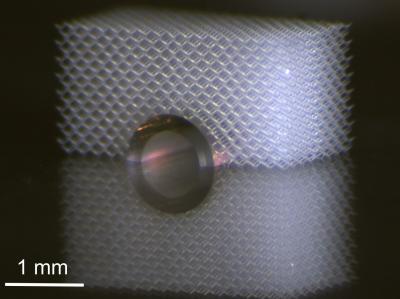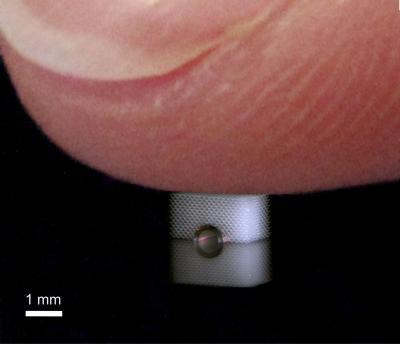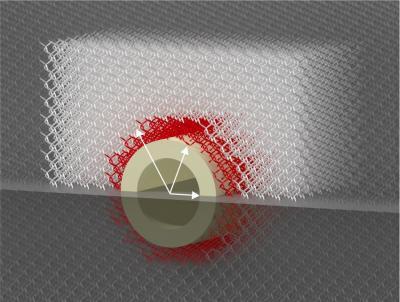In the past years, invisibility cloaks using metamaterials have developed for various senses. At certain wavelengths, objects can be hidden from light, for example, and even heat or sound.
But touch? That defies our The Invisible Man science-fiction sensibilities.
Yet Karlsruher Institut für Technologie (KIT)
scientists have done just that - they created a volume in which an object can be hidden from touching, they report in Nature Communications.
Like most, their invisibility cloak is based on a metamaterial that consists of a polymer. The metamaterial is a crystalline material structured with sub-micrometer accuracy. It consists of needle-shaped cones, whose tips meet. The size of the contact points is calculated precisely to reach the mechanical properties desired. In this way, a structure results, through which a finger or a measurement instrument cannot feel its way.

Metamaterials protect objects on the lower side from touching. Credit: Photo: T: Bückmann / KIT
"We build the structure around the object to be hidden. In this structure, strength depends on the location in a defined way," explains Tiemo Bückmann, KIT, the first author of the article. "The precision of the components combined with the size of the complete arrangement was one of the big obstacles to the development of the mechanical invisibility cloak."
In the invisibility cloak produced, a hard cylinder is inserted into the bottom layer. Any objects to be hidden can be put into its cavity. If a light foam or many layers of cotton would be placed above the hard cylinder, the cylinder would be more difficult to touch, but could still be felt as a form. The metamaterial structure directs the forces of the touching finger such that the cylinder is hidden completely.
"It is like in Hans-Christian Andersen's fairy tale about the princess and the pea. The princess feels the pea in spite of the mattresses. When using our new material, however, one mattress would be sufficient for the princess to sleep well," Bückmann explains.

With the finger or a force measurement instrument, no information is obtained about the bottom side of the material. Photo: T Bückmann / KIT
Implementation of such a mechanical invisibility cloak is rather complex. After the definition of the desired mechanical properties, the physical basic equations are inverted mathematically in order to draw conclusions with respect to the structure of the metamaterial. Using this method, materials not encountered in nature can be planned. Examples are solids which are stiff to pressure, but soft to shear.
For manufacture from the polymer, the direct laser writing method of the KIT spinoff Nanoscribe is applied. It reaches the required precision over the complete sample length of several millimeters.

The material consists of precisely calculated needle-shaped elements, such that strength depends on the location in a defined way. Photo: T. Bückmann / KIT
The mechanical invisibility cloak represents pure physical fundamental research, but might open up the door to interesting applications in a few years from now, as it allows for producing materials with freely selectable mechanical properties. Examples are very thin, light, and still comfortable camping mattresses or carpets hiding cables and pipelines below.





Comments